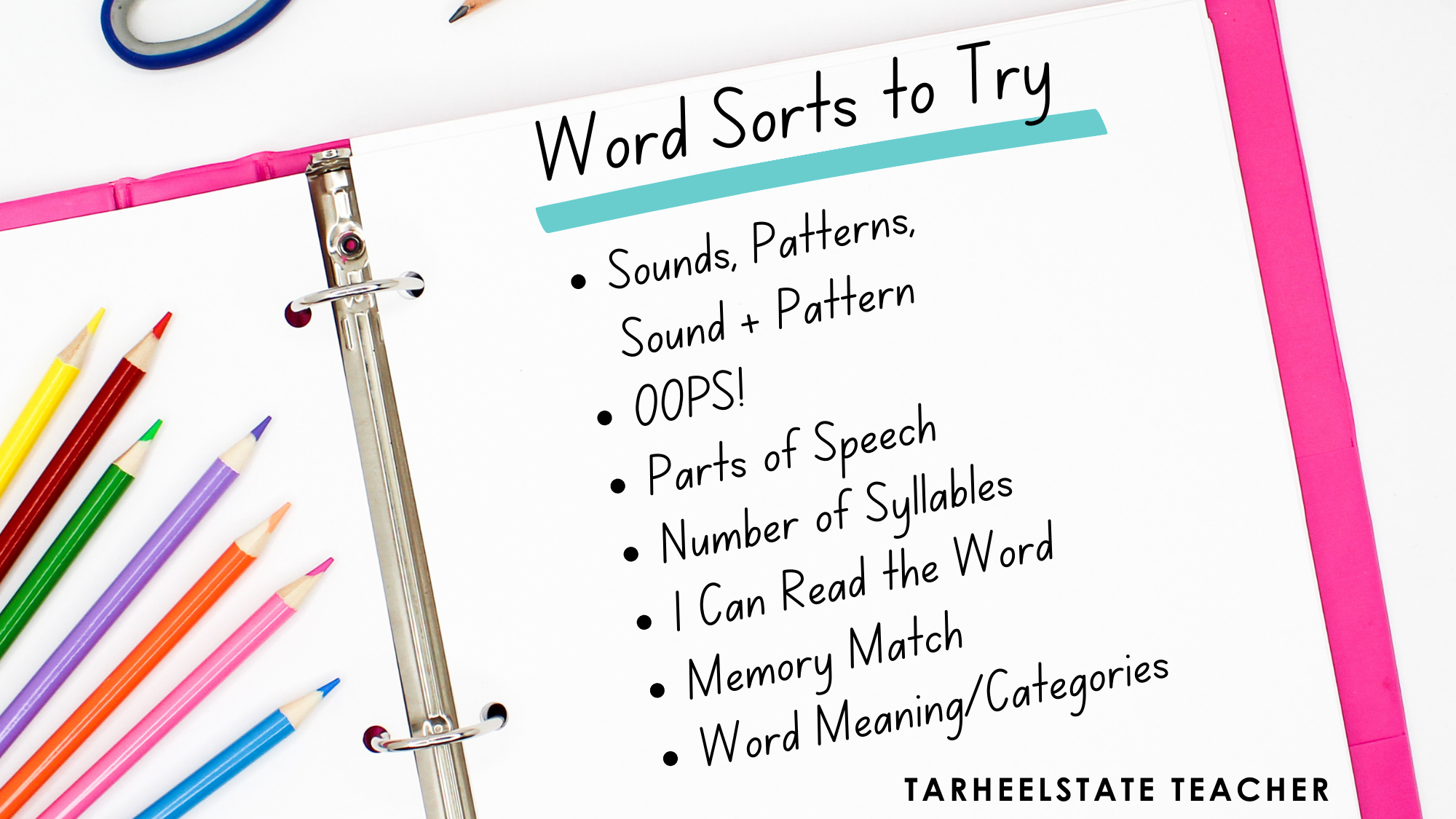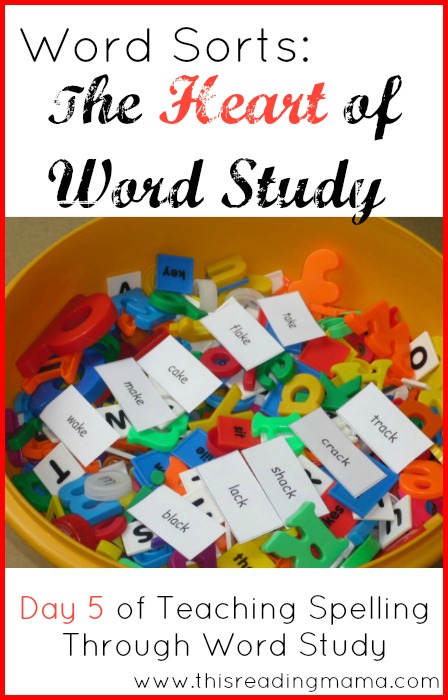
Here we are on Day 5 of Teaching Spelling through Word Study, a 10-day series I’m doing with iHomeschool Network. We’ve spent a lot of time on the background for word study, so if this is your first day joining me, I hope you’ll take a look back (click HERE or on the picture above to see a list of the posts thus far). Today’s focus is word sorts because they are at the heart of word study!
What are Word Sorts?
Let me start by showing instead of telling. Take for example this ai/ay word sort:
If you were my child and working on these patterns, I’d ask you to cut them apart and sort these words as either having the ai or ay pattern (a visual sort). Your sort would look something like this:
Then, we’d talk about the words and patterns: What do you notice about the long a spelling in the first column/in the second column? When was the ai pattern used? When was the ay pattern used? So what generalization or rule can you form from studying all these words? (Answer: When I hear the long a sound in the middle of the word, I use the ai pattern and when I hear the long a sound at the end of a word, I use the ay pattern.)
The Benefit of Word Sorts
Categorizing is the fundamental way that humans make sense of the world. When students sorts words they are engaged in the active process of searching, comparing, contrasting, and analyzing. Word sorts help students organize what they know about words and to form generalizations that they can then apply to new words they encounter in their reading.” (Words Their Way, 61)
1. Word Sorts are Hands-On
With word sorts, students learn by doing. Comparing, contrasting, manipulating, analyzing, formulating, creating; just a few words to describe what the student is doing while sorting the words.
2. Word Sorts Happen at the Child’s Instructional Level
We spent some time yesterday on how to find your child’s instructional level (also known as ZPD). This is where students learn best. Words for the word sorts are chosen to challenge, but not frustrate the child.
3. Word Sorts are Analytic in Nature
Many phonics programs are synthetic, like a puzzle. You give the child the puzzle pieces and ask him to put it together to form the entire picture. (Here are the letter sounds…now sound out these words.)
With word sorts, students are give the big picture (entire words) and asked to break them apart and analyze them, an important skill in reading and writing unknown words.
4. Word Sorts Don’t Rely on Rote Memorization
“Effective word sorts require more than copying the words from a list as seen in traditional spellers. [Copying] the word is not as important as the physical sorting.” (Mattmann and Cowan-founders of Spelling Scholar). Students are required to be active, not passive, participants in their own learning and understanding of how words work.
5. Word Sorts are Efficient
Each word sort contains many examples of that particular spelling pattern; more than a typical spelling worksheet. Word sorts (and the activities that accompany them) can also be done in a short amount of time. In our home, the word sorting activities take about 10 minutes maximum each day. And the same word cards can be used over and over for multiple purposes (more to come on this next week).
6. Word Sorts are Flexible
When I first taught in the classroom, all the kids had the same spelling list and everyone worked on the same phonics skill each week. I could clearly see that my spelling instruction worked for maybe 40% of my students, with it being WAY too easy for some kids and WAY too hard for other kids. This meant that at any given time, 60% of my class wasn’t truly learning! I was frustrated, but unsure what do about it. When I discovered the word study approach my second year of teaching, my spelling instruction was forever changed. While I’m now homeschooling, it is even more obvious that my children aren’t on the same spelling level. Word sorts (and picture sorts) help to differentiate that instruction, providing what each child needs.
{The 6 benefits listed above were adpated from Words Their Way.}
More Resources with Word Sorts:
- Helping Spellers Make Phonics Generalizations (from word sorts)
- My FREE Elementary Printables contains some seasonal word sorts
- 10 Days of Teaching Spelling Through Word Study
~Becky
Download

Skip this Video
Loading SlideShow in 5 Seconds..
Word Study – Word Sorts PowerPoint Presentation
Download Presentation
Word Study – Word Sorts
— — — — — — — — — — — — — — — — — — — — — — — — — — — E N D — — — — — — — — — — — — — — — — — — — — — — — — — — —
Presentation Transcript
-
Word Study – Word Sorts By: Laura Poland
-
Spelling is an important area of interest and concern, not only among literacy teachers, but also among numerous scholars and professionals.
-
Misconceptions • Teachers have often believed that spelling errors were due to poor sound discrimination and inadequate visual and sequential memory. • Many have also had the incorrect view that spelling is only alphabetic and irregular and students must learn to spell by rote memorization (Henderson & Templeton, 1986).
-
Learning to Spell • Is a process of learning relationships between word spelling patterns and their pronunciations (Invernizzi & Abouzeid, 1994). • Requires the ability to understand sound and letter regularities, vowel patterns, and morphological conventions that make up our spelling system (Invernizzi & Hayes, 2004). • Sequences of letters can be predictable. Students can master these sequences when they become aware of such patterns and realize that they must find, focus on, and learn these patterns (Henderson & Templeton, 1986).
-
Word Study • An approach to phonics and spelling instruction that has progressed from developmental-spelling studies and theory (Invernizzi & Hayes, 2004). • Has been called a modern way to teach phonics and is considered to be spelling-based phonics instruction (Joseph & Orlins, 2005). • Gives students the opportunity to critically examine, manipulate, and make decisions about words according to similarities and differences in spelling and sound (Invernizzi & Abouzeid, 1994). • Is highly systematic, and its explicit approaches involve direct teaching, high-level of student engagement, and individual accountability (Mesmer & Griffith, 2005).
-
Word Sorts • Word sorts are a specific type of word study. In 1981 Henderson devised the idea of word sorting, because he was sure that understanding how students learned to spell words could also give clues on how they read words (Invernizzi & Hayes, 2004). • Sorting activities are active, thoughtful, problem solving tasks (Fresch, 2000).
-
Benefits of Word Sorts • Word sorting gives hands-on opportunities for students to work through the complexities of our language. • It also promotes word analysis, which can benefit students in other reading and writing activities (Fresch, 2000). • They can be beneficial for helping students to spell words, recognize words, make word connections, become aware of the phonemic structure of words, and gain meaning of words (Joseph & Orlins, 2005). • Word sorting and word hunting require students to explore spelling properties of words in relation to the spelling characteristics of words they already know (Invernizzi & Hayes, 2004).
-
Benefits Continued • A very unique attribute of word study originates from its use of differentiated instruction in different levels of word knowledge (Bear, Invernizzi, Templeton, & Johnston, 2008). Research suggests that if students are reading at various levels, their word knowledge is most likely different as well. This has to be considered when learning to spell (Fresch, 2000). By narrowing strategies on the zone of proximal development teachers can foster students’ growth toward a mature written vocabulary (Invernizzi & Abouzeid, 1994). • This knowledge of the student’s invented spellings can help design individualized appropriate word study activities for small groups (Invernizzi & Abouzeid, 1994). Grouping students is one of the most important elements of instruction that promotes literacy success, especially for at-risk students. These groups should always remain flexible and dynamic. Teachers should regroup when necessary to best meet the changing needs of students (Invernizzi & Hayes, 2004).
-
Determining Spelling Stages of Students • Teachers are able to determine the level of students by using a developmental-spelling assessment, like the “Words Their Way Spelling Inventory”. Qualitative spelling inventories outline the basic foundation of the spelling system to be learned and they list specific spelling features that need to be systematically taught in developmental progression. • These test a small amount of student spellings with words that have been thoroughly selected to show the taxonomy of written English. Students are usually scored by the presence or absence of specific spelling attributes and if the word is spelled correctly or not. Understanding and interpreting errors allow a teacher to determine the specific word attributes that students need to focus on if they are to continue to improve their spelling skills (Henderson & Templeton, 1986).
-
Lesson Plan Format 1st — Begin with a teacher demonstration. The teacher begins by introducing the sort and the key words or pictures (if they are being utilized). 2nd — Next, the student sorts and checks his or her sort individually or with a partner. During the sort, students arrange the words underneath the related column. 3rd — After sorting, students read the words in each column to check their work. After checking, a reflection helps to declare, compare, and contrast the words. 4th — Finally, the teacher may extend this activity with games, other sorts, or journaling activities (Bear, 2006).
-
References Bear, D., Invernizzi, M., Templeton, S., & Johnston, F. (2008). Words their way: Word study for phonics, vocabulary, and spelling instruction. New Jersey: Pearson Education. Fresch, M. (2000, January). What we learned from Josh: Sorting out word sorting. Language Arts, 77(3), 232. Henderson, E., & Templeton, S. (1986, January 1). A developmental perspective of formal spelling instruction through alphabet, pattern, and meaning. Elementary School Journal,86(3), 305-16. Invernizzi, M., & Abouzeid, M. (1994, November). Using students’ invented spellings as guide for spelling instruction that emphasizes word study. Elementary School Journal, 95(2), 155. Invernizzi, M., & Hayes, L. (2004). Developmental-spelling research: A systematic imperative. Reading Research Quarterly, 39(2), 216-228. Joseph, L., & Orlins, A. (2005, Summer 2005). Multiple uses of a word study technique. Reading Improvement, 42(2), 73-79. Mesmer, H., & Griffith, P. (2005). Everybody’s selling it—But just what is explicit, systematic phonics instruction? International Reading Association, 59(4), 366-376.
Word study is a key component of learning to read. We want students to be aware of the patterns in words, so that they can become more fluent readers. This is where word sorts come into play. Word sorts help students recognize the spelling patterns in words, all while manipulating the words to incorporate hands-on learning.
If you are considering running word sorts in your classroom, do it! You’ll see amazing benefits in your student’s learning. Don’t know how to do them? Check out some tips below!
Selecting Words for the Sorts
Your first step in the word sort process is to select words for your students to study. You may have many different options (which I will list below), but one thing remains constant: the words need to follow a particular pattern.
Disclaimer: There are a few viewpoints on classroom instruction: 1- we, as teachers, should differentiate our instruction based on where our students are in their development; 2- all students should be exposed to the same grade level material (differentiation will not get below level students up to grade level). I am not here to say which is right or wrong. I am just pointing out that there are valid options to word study, no matter what your belief is. You can set up your word study lists in a way that you believe will benefit your students the greatest.
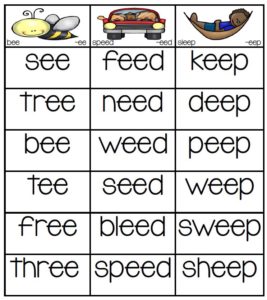
* The words your students are studying each week in the curriculum your school uses
* The scope and sequence of learning you, your grade level or school has set up
* The Words Their Way books
If none of these options are viable for you, click here for some word study resources for primary students (K-5)
Grouping
Once your word lists are ready to go, determine how you are going to group your students. If your word lists are differentiated by developmental levels, those will obviously be your word study groups. If you are using the same list for the entire class, you will want to place your students into smaller groups of no more than 4 at a time. 2-3 students work the best.
How to
1- Review with your group what the spelling focus is (i.e. patterns of short a, long vowels with bossy e, hard and soft c and g…etc.)
2- Take out the header cards and discuss them with your students (so your students know the options of where to put the words after they’ve read them)
3- Mix up the word cards (depending on your students, you can have them do this)
4- Place the word cards upside down in a pile
5- The first student flips over the first card and reads the word
6- That student places the word in the correct column according to the spelling pattern of that word
7- Then the next student takes their turn, following the same steps as the first student
8- After the word is placed, have the student re-read all of the words in the column, pointing to all of the words they read (for kinesthetic learning)
9- Continue repeating this pattern until all the words have been placed
Teacher Discretion
There are many in the moment decisions that we make about how we run word sorts. Well, that’s actually all day, every day isn’t it?
Decoding
When it comes to word sorts you have many options on how students decode the words. No matter what method you chose for your students, you want them saying the whole word as many times as possible without decoding (which is why they repeatedly read through the previous words in the column as they place the new word). When reading the new word, students can:
* Orally decode it sound by sound and then orall recode it
* Decode it sound by sound in their head and then orally recode it
* Read the word (if they do not need to decode it)
Errors
When students make an error, there are several ways you can bring it up to them without blatantly saying they are wrong or making them feel bad. The one I prefer to use the most is to ask students to explain why they put the word in the column that they chose. Once they have to explain their thinking, they will almost always catch their mistake. It is wise to also ask this question when the answer is correct. It is still requiring students to explain their thinking and they won’t immediately know they were wrong when you ask it.
When to Stop the Sort
Time is obviously a huge factor in how much time you will have for your groups and their word sort. If you are in a crunch for time you can:
– Give each student only a select number of turns
– Stop when there is a select number of words in each column
– Set a timer
Set-up
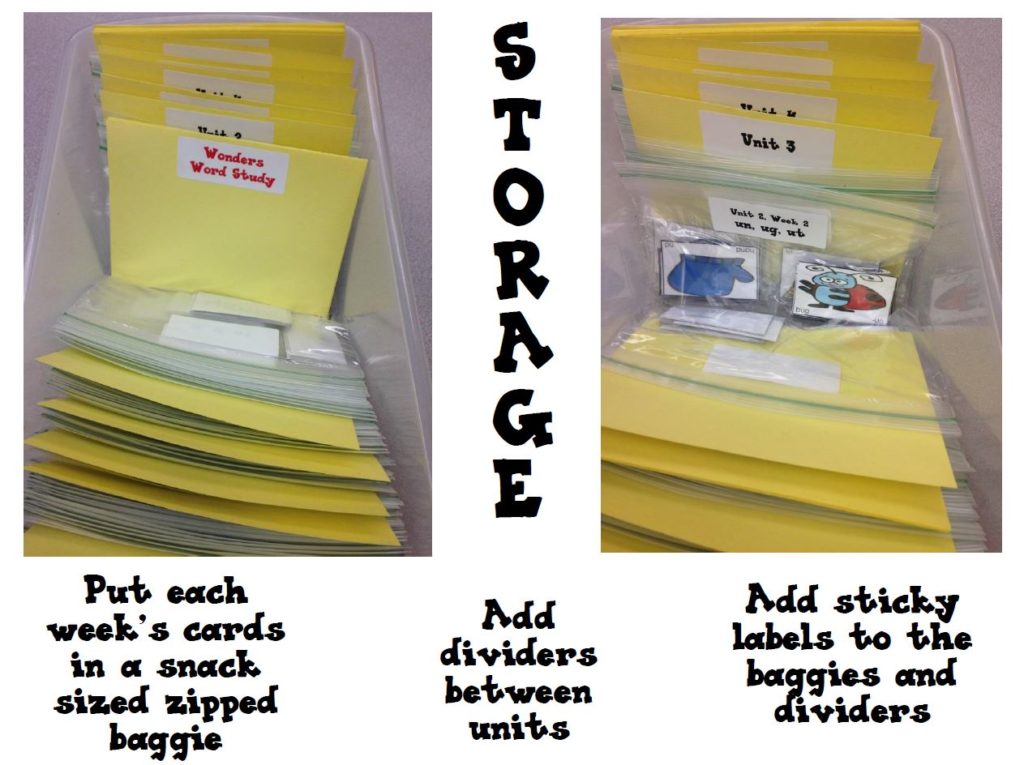
Who Else Can Run It?
One of the best aspects of running word sorting groups is that you literally train anyone to run them!
– Paraprofessionals
– Parent Helpers
– Volunteers
– High school helpers
How to incorporate it into Interactive Notebooks
Check out this blog post (coming soon) about how to incorporate it into interactive notebooks.
Independent Literacy Center Time
Check out this soon to be written blog post about how incorporate it into interactive notebooks. This link will be up and running soon!
Extension Activities
There are so many extension activities that your students can do after they are done with their sorts. Click here to learn more about extension activities for your word sort groups!
Video Tutorial
Here’s the same information in video format if that works better for your learning style!
Inside: My 10 favorite word sort activities. Use these in your classroom or for distance learning to build up spelling and phonics skills.
O
n Thursday nights when I was in 2nd grade, my mom turned into a spelling cheerleader.
“B clap, U-R clap, R-I clap -E-D!” she’d chant.
It wasn’t that my mom loved spelling like teachers love a snow day.
But there was a reason she got involved.
I did the typical practice, copy the word a few times, try it from memory, question what in the world is wrong with me when my attempt doesn’t match the narrow paper list… again!
That’s when my mom stepped in with something loud and theatrical to sear the word into my memory (and also to get my perfectionistic butt to bed!)
The question is: why, for a decent reader and writer like me, was it so hard to memorize the words on my spelling list?
The Problem Was This:
In the early 90s the weekly spelling lists were a random collection of words that someone, in some office, somewhere, thought kids needed to know how to spell.
With no rhyme or reason to the word lists, it WAS a tedious effort to memorize those spellings.
But that’s just the way spelling had to be… or was it?
Enter: The word sort


Words in a sort are chosen because they fit in specific categories.
Word sorts work like this:
- Kids learn the sound or rule for each category
- They sort cards with words that each fit into each of the categories
- They practice with the spelling sort in a variety of ways
So the critical question is…
Do Sorting Activities Actually Improve Spelling?
I was excited to learn that researchers find word sort activities improve not only spelling, but also reading skills!
Studies show that students who receive word sort instruction perform better in phonemic segmentation, word identification, and spelling than students who receive traditional spelling instruction.
(Joseph, 2000)
Word sorts help you explicitly teach phonics skills and tap into the power of word families, both research-based strategies for teaching.
You might be thinking: Ok, word sorts improve spelling, but don’t kids get bored with lining up word cards? How do I keep the task fresh so kids stay engaged?
9 Word Sort Activities for Busy Teachers
With simple supplies that you probably already have, you can easily switch up your word study routine to keep it interesting. These tasks work well as part of a daily whole-class word study time, a spelling center, or as homework.
1. Highlight the pattern – When kids notice familiar letter patterns in words, suddenly they go from tediously sounding out “c – a – t” to fluently putting together chunks in bigger words, like “c – au – tion.” Have students use highlighters (and even color-coding) to mark the patterns they find.
Keep in mind: this might be a “sometimes” activity because finding and marking the patterns is beneficial but students could then rely too heavily on color matching instead of pattern recognition when using the word sort repeatedly.
2. Speed Sort – Lots of kids are motivated by competition. Here are my favorite ways to speed sort:
- Students start sorting their words when you say “go.” They stand up when they’re done.
- Students race against a partner to see who can sort faster.
- Students work on their own with a timer and try to improve their time.
3. Sort and Write – Students sort their word cards and then record their work by writing it in a notebook or on a whiteboard.
**Definitely do this one!** Students seem to retain the words much better if they have practiced writing them, not just sorting the pieces.
4. Find My Mistake – Challenge students to solve the puzzle and prove that they can’t be tricked!
- Each student completes their own word sort.
- Then the move a few words into the wrong columns.
- Switch with a partner and see if each student can find the other’s mistakes and fix them.
5. Digital Sort – Take word sorts to Google Classroom, SeeSaw or another digital platform. Set up a background and word boxes yourself or go for a premade set of digital word sorts. This option is great as a word work center in class or as an option for distance learning.
Digital Sorts for Google Classroom
Digital Sorts for Seesaw
6. Sort the Room – Cut apart a word sort and tape the words around the room. Kids write the headings in their notebook. Then they walk around the classroom and write the words in the correct column as they find them.
Worried about finding the time to cut and tape up the words? Make it a special job that a student or two can help out with.
7. Rhyme and Write – Students draw out a card from their word sort. They write the word and see how many other rhyming words they can come up with. This way they are generalizing the spelling pattern to more words.
8. Quiz a Partner – Students work in pairs. Both write the sorting categories on their paper. One partner pulls a word card and reads it. The other partner tries to spell it in the correct column. They check the word together. Then they switch roles and continue.
9. Use in a Sentence – To push students to the next level of understanding, challenge them to use words from their sort in the context of a sentence.
10. Sort and Glue – Save this one for the last time you want to use each word sort. Kids sort out their word cards and then glue them down either in a notebook or on a piece of paper. The glued sort can be used later for reference during writing and for review.
A Simple Routine for the Win
One of the worst mistakes I made as a new teacher was thinking that kids could be exposed to a skill once and be good to go! Wouldn’t that be nice? That would be like if I could follow my phone’s navigation to get somewhere once and never need to look that place up again….pshh :::shades face with hand:::
Kids need to practice with the same sort a few times.
You don’t want them to get bored with it but you also don’t want to exhaust yourself by reinventing the spelling practice wheel every day or week.
There’s a simple solution: Set up a weekly rotation of word sort activities from the choices above. After a few weeks, change out one of the activities for something new. Repeat all year!
It might look like this:
- Monday – Introduce the spelling sort, kids all sort once
- Tuesday – speed sort
- Wednesday – sort and write
- Thursday – sort and glue
- Friday – spelling test on the sort words
Looking for More Support with Word Sorts?
- Research About Spelling for More Effective Instruction
Printable word sorts
Word Sorts for Google Classroom
Word sorts for Seesaw
References:
Joseph, L. (2000). Developing first graders’ phonemic awareness, word identification and spelling: a comparison of two contemporary phonic instructional approaches. Reading Research and Instruction, 39(2), 160-9.
Hannah Braun is a former teacher with 8 years of experience in the classroom and a master’s degree in early childhood education. She designs engaging, organized classroom resources for 1st-3rd grade teachers.
Word sorts are an engaging phonics activity for K-2 students who are learning how words work while developing word awareness skills. Make sure to download a FREE sample of these differentiated word sorts in this post.
When we first introduce a new phonics skill it is best to keep the instruction explicit, clear, and to the point. But as I discussed in my last blog post, in order for students to truly master the phonics skills we teach we must provide them with lots of opportunities for review and repetition!
Even when we know we need to provide this extra practice, it can be a real challenge to keep coming up with activities that are engaging and effective. In his book Phonics from A to Z, Wiley Blevins encourages us to have our students explore and play with letter sounds and suggests word sorts are a great way to do so!
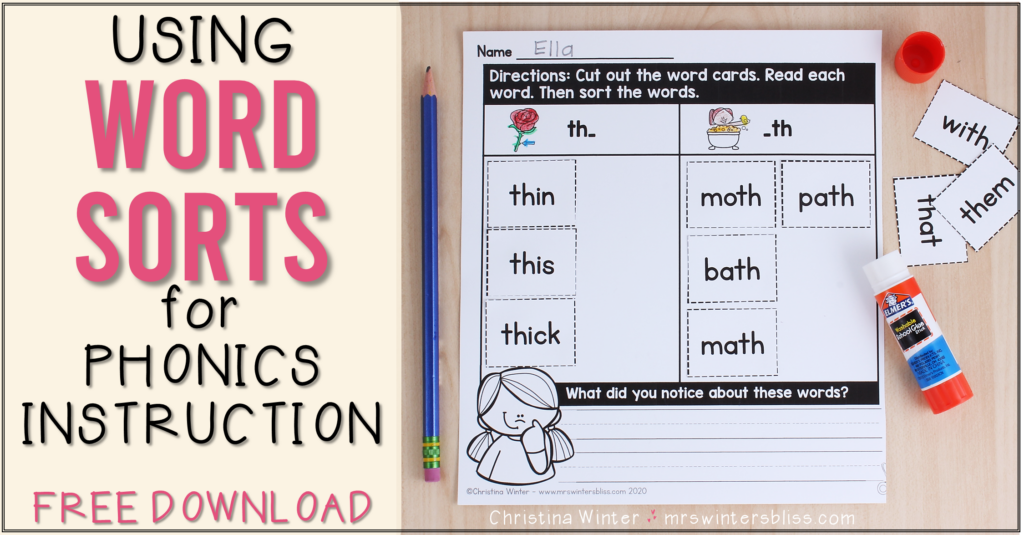
What are Word Sorts?
Word sorts require students to think about how words work by drawing their attention to common spelling patterns. Students are given a set of words that all have something in common and asked to sort them by the common feature.
There are many types of word sorts but the three most common are:
Open sorts: In an open sort, students are not told how to sort the words. They can sort them anyway they want. It is smart to start with an open sort because it gives you insight into students’ thinking and what they notice about words.
Closed sorts: In a closed sort, students are told how to sort words. Students visually scan the words for the pattern that you specified. The most valuable part of a closed sort is the conversation you have after the sort is complete. Blevins suggests questions like, What do you notice about these words? What do you notice about these spellings for long-o? Do you know other words with these spellings?
Timed sorts: In a timed sort, students are told how to sort a set of words but given a set amount of time to do so. A timed sort is a great thing to do with a set of words that students have been working with for a while. Students love the timed aspect which makes it feel like a game, but it also helps to train their eyes to quickly see larger word chunks which will help them when they encounter new and unfamiliar words.
Word Sort Routines
The routine for word sorts is simple! First, introduce the task by naming it and explaining the purpose.
Next, have students sort the words. If you’re doing a closed sort you’ll want to model one or two of the words. As students work, you can observe and ask students why they are putting specific words into each category.
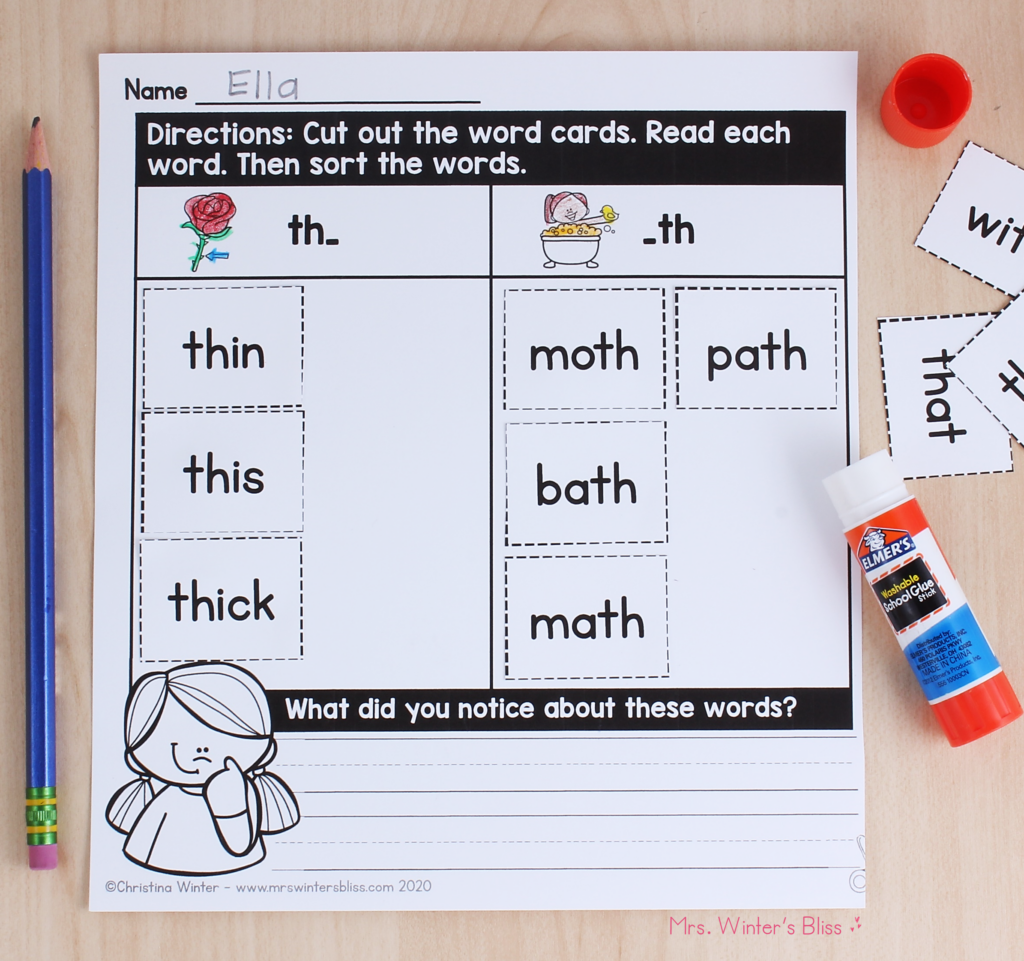
Finally, (and this is the most important one!) you’ll want to check and discuss the sort. Ask students what they learned about the words from doing the sort and guide them to the aspect that will help them in their future reading and writing!
Differentiated Word Sorts
Today I’m thrilled to share with you my very own Phonics Word Sort resource! These DIFFERENTIATED activities are both printable and digital so you can use them in the classroom or for distance learning with Google Classroom & Seesaw!

These word sorts are an engaging phonics activity to compliment your word study routines. There are two levels of word sorts: whole words and words with the missing target spelling pattern to assign to your students. Students will look for common spelling patterns, sort, then communicate what they notice and have learned about the words they’ve sorted.
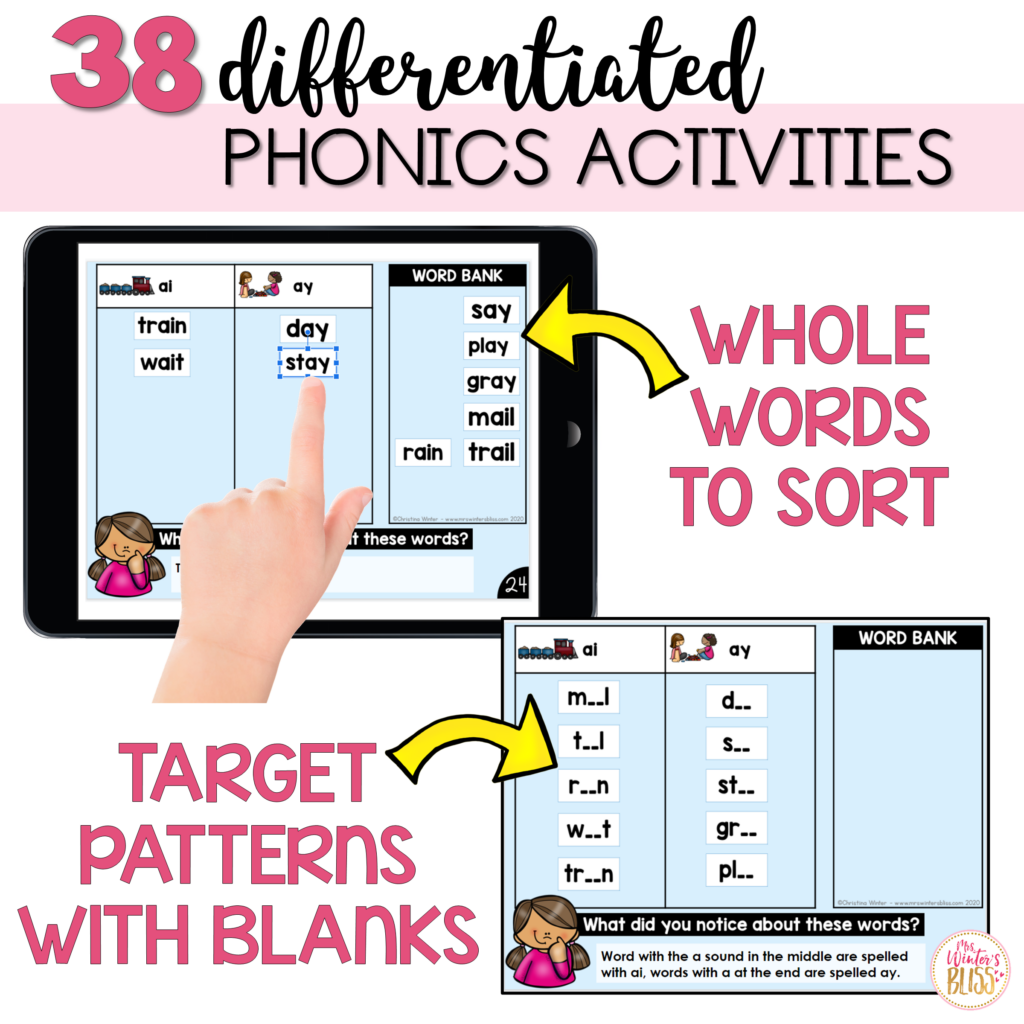
The resource includes the following Phonics Patterns:
- CVC Words
- Digraphs
- Blends
- Long Vowels
- Diphthongs
- R-Controlled Vowels
- Complex Vowels
All activities in the resource are all based on Wiley Blevins’ recommended scope and sequence for K-2 students. You can be confident that they are developmentally appropriate and provide the scaffolding students need for mastery.
Easy to Prep and Manage!
One of the major pitfalls with some word sorts is that they often require a lot of small pieces of paper, letter cuts, or word cards. They can take a long time to prep, distribute, and collect!
But NOT these activities! The printable pieces require very few cuts for students. There will be NO TIME wasted dealing with materials!
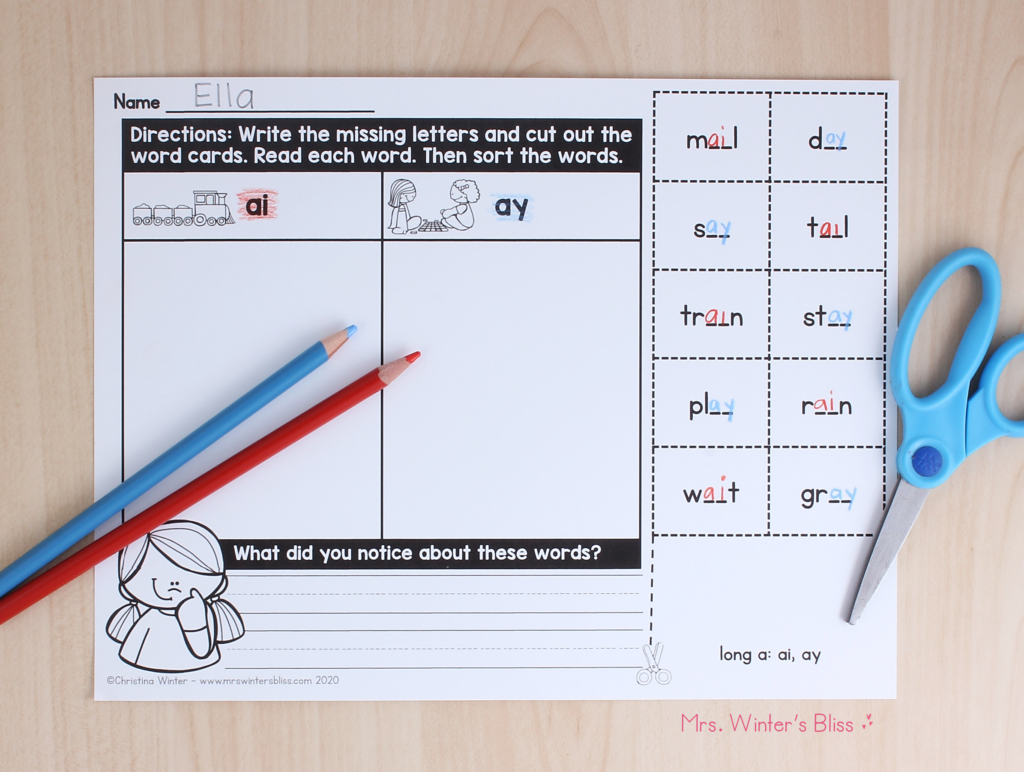
The digital version has been PRELOADED for you. With 1 click you add them to your Seesaw library or Google Drive and then you can assign them to your students for remote learning or individual centers!
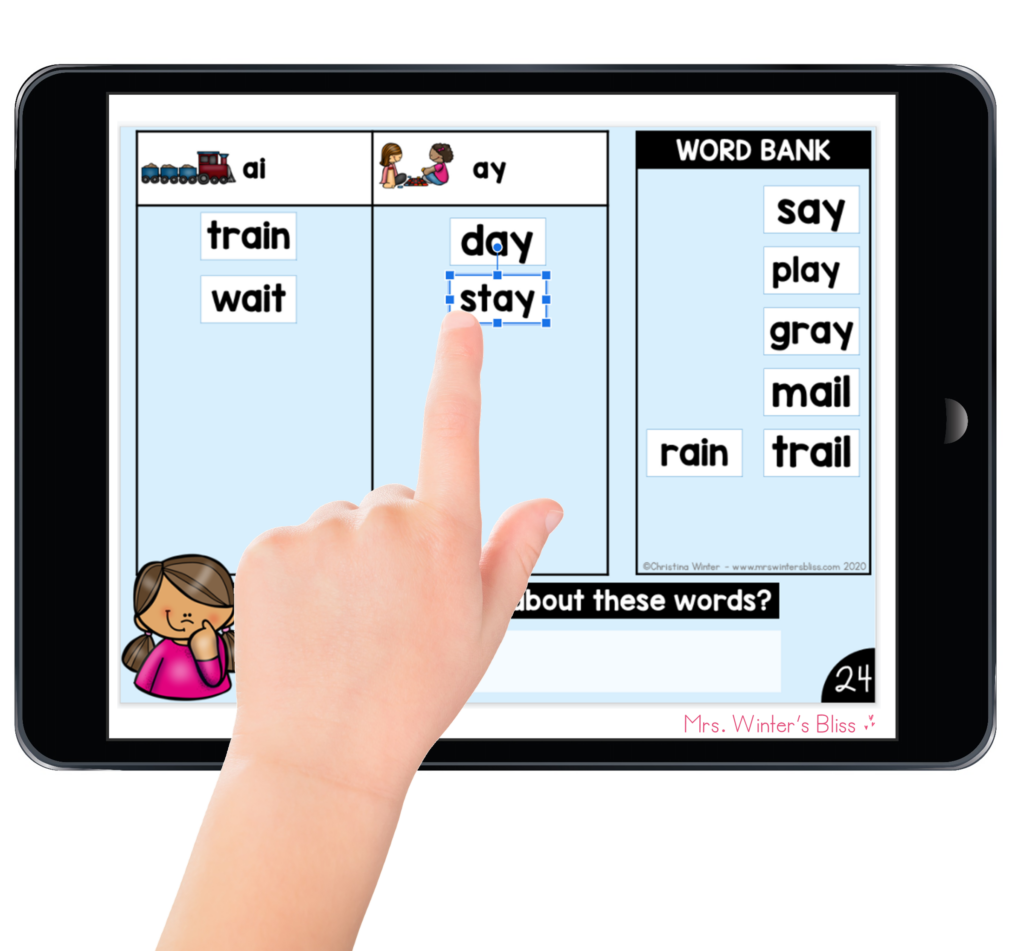
Another BONUS is that the structure of each word sort in the resource remains the same. This saves you from having to explain and model everytime you assign one! Once your students have successfully completed one sort, you can be sure they’ll be able to independently work through the rest at whatever pace you assign them! And with 38 different word sorts you’ll have enough to last you the ENTIRE YEAR!
Download FREE word sorts here:
-
FREE Phonics Word Sorts – DIFFERENTIATED – digital & printable
$0.00
Rated 4.86 out of 5 based on 7 customer ratings
-
Phonics Word Sorts – DIFFERENTIATED – digital & printable
$13.00
Rated 5.00 out of 5 based on 6 customer ratings
I hope the information and the word sorts I’ve shared today will make it easy for you to provide your students with meaningful practice that will allow them to develop their word awareness and master their phonics skills!
Be on the lookout for my next blog post where I’ll be sharing all about another great activity to help develop word awareness- Word Building Activities!
– SHOP THIS BLOG POST –
-
Phonics Word Sorts – DIFFERENTIATED – digital & printable
$13.00
Rated 5.00 out of 5 based on 6 customer ratings
-
Beginning Sounds Alphabet Sort – Google Slides, Seesaw, & worksheets
$8.00
–PIN for LATER–
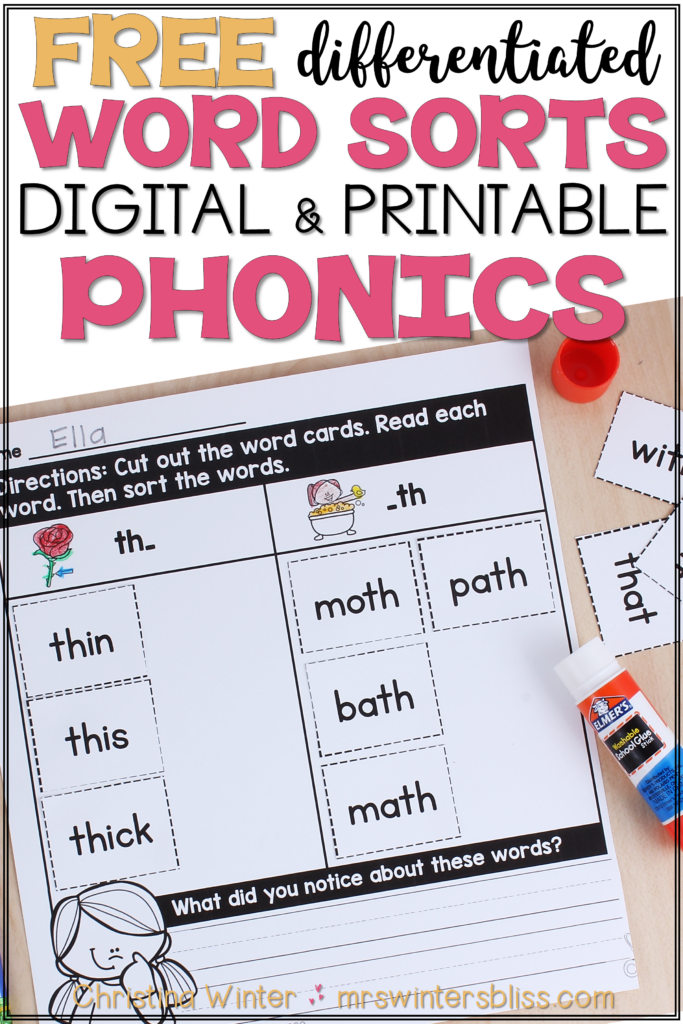
Understanding how to spell is vitally important, especially for our young readers and writers. Taking the time to study spelling words provides an amazing support for learning to read. But often times, spelling is taught as a list of rules to learn (with a long list of exceptions) or as haphazard words to memorize. Instead of focusing on how different our English words are, why not group them together according to how similar they are?
Word Study is spelling approach in which words are grouped and studied according to their similarities. Similar words are analyzed in a hands-on, developmentally appropriate fashion, helping kids to make sense of how words are constructed in the English language (our language is more regular than you might expect).
Learn How to Spell with Word Sorts
At the heart of the word study approach are word sorts. Words are studied that share a common feature. In this example with my 3rd grader, we studied words with the endings of -ed and -ing. In this particular case, I chose the words directly from his reading and wrote them on the blank word sort template in the back of Words Their Way. He cut them out and we sorted the words together, based on what was done to the base word before adding the endings -ed and -ing.
Once the words were sorted into their columns, I posed this problem to him: Why do you think we double the last letter in some base words before we add -ing and -ed and then do nothing to other base words? We analyzed the base words in each column together. We talked about what was similar about all the base words under the “nothing” category and again in the “double” column.
Together, we created a generalization (or rule) of why the last letters of base words should or shouldn’t be doubled. I stated, “If our generalization is true, then it should work for other base words, too.” We took a word walk through the book and found even more words that fit under each column (looking for common features).
Word Sorts for All Ages
Word sorts are a hands-on way to teach kids how to spell, starting with preschoolers all the way through high school. These sorts are adapted as picture sorts (for the very young) or word meaning sorts (with Greek and Latin word parts for older students). Words Their Way has several word sorting books, which you can read about here, that fit any stage of spelling development.
I’m also SUPER EXCITED to have the opportunity to launch a series of spelling apps, based on the word study approach. Our first app is called Short Vowel Word Study and features word sorts among other spelling activities for word families and longer short vowel words. Our next project is already in the making, with a Long Vowel Word Study app, so stay tuned!
Short Vowel Word Study app is available on iTunes or Google Play for $2.99.
{iTunes links is an affiliate link}
Learning how to spell takes time and diligence. But I believe that it is a worthy investment for all our learners, from preschool to high school!
Becky Spence is a blogger, author, speaker, and coffee drinker. She homeschools four little blessings who keep her on her feet (and knees). She is the author of This Reading Mama, where she shares lots of reading and writing activities as well as free literacy curricula and printables. Her two favorite places to hang out are Facebook and Instagram.
Join 40,000+ Other Awesome People
Subscribe to the Real Life at Home weekly newsletter to get our latest content, exclusive free printables, learning activities, and ideas for celebrating with your kids all year
Some say that word sorts are the heart of a word study program…I prefer to think of it as one component in an array of activities that help our upper elementary students to better understand and spell words. As students complete different sorts, they can think about the spelling patterns and sounds they see and hear, recognize “oddballs” or words that don’t seem to fit in with similar words, and we as teachers can gain better insight into their mastery of the word study concepts and the words’ meanings. Today, I’ve got 9 types of word sorts that you can use with your students. Don’t miss your chance to grab the free PDF of direction posters and a “You Choose” word sort choice board that will help you implement word sorting routines with your students.
Confession…for years, I ignored word sorting as a viable activity to implement into my 4th and 5th graders’ word study routine. I mean, my students sorted words, but we didn’t really GO DEEP with that activity in our routine. In my defense, I was convinced that word sorting was only really necessary for students at the lowest spelling levels and we typically completed word sorting activities together in our small group meetings.
Well, this past year, I realized that word sorting could be a meaningful part of students’ word study schedule AND that word sorting activities can be varied to meet students’ different spelling and language needs. I created a list of word sorts that target different skills and decided that a choice board was the best way to implement word sorting into our routines.
Finally, I’m on board! (And, EEEK! Couldn’t be more in love with the choice boards and activities!)
FYI, I use the Words Their Way word sort books as my go-to for differentiated word lists. The Words Their Way Word Sort Books, (here on Amazon) contain printable sorts for each word list + helpful teacher notes. (As an Amazon Associate, I earn from qualifying purchases through affiliate links. Read my full disclosure here.)
And, it’s good to know that my students have a marble notebook for housing their word study work. Let’s get going so perhaps you can find some new sorting ideas that you’re excited to implement!
9 TYPES OF WORD SORTS FOR WORD STUDY
1) SOUND SORT
In a sound sort, students whisper-read each word aloud and group words that have contain similar sounds. When all of their words are completed, students record their sort in their word study notebook and should label each group to identify what the words have in common.
2) PATTERN SORT
Again, students whisper read their word study words, but this time, they pay attention to the letter patterns.
Why might students complete a pattern sort after doing a sound sort? At times, students may have a word list of words that all make the same sound but that sound is represented by different spelling patterns. For example, in a long-a word list, students may have the patterns “-ay,” “-eigh,” and “-a-e.”
3) SOUND AND PATTERN SORT
A sound and pattern sort gets more detailed than just a sound or pattern sort and is very valuable for sorts where words may contain the same patterns but make different sounds.
Given the long-a example above, the word list may contain eight and height. Although the vowel pattern in the two words is identical, eight is sounded as a long-a and height is sounded as a long-i. In a sound and pattern sort, height would go into it’s own category and perhaps even be recorded as a “oddball” word.
Interested in adding sorts to your word study routine, I’ll send the “You Choose” word sort boards along with direction posters for each type of sort to your inbox. Just subscribe below!
WORD STUDY SORT DIRECTION POSTERS + MORE!
Use these posters to teach your students different ways to sort their words. You’ll also get a word sort choice board, directions for «How to Quiz Yourself,» and more.
You’ll be joining the Tarheelstate Teacher email community for 3rd-5th grade teachers and receive tons of other tips and perks along the way! Just check your inbox!
4) OOPS! SORT
In this fun sort, students create a sort for a partner where they’ve misplaced one word in each column. Then they have the partner see if they can discover all of the mistakes. I love implementing an OOPS! Sort because it gives students a sneaky way to do another sound, pattern, or sound and pattern sort (and some of our students really need to spend time on these types of sorts, although boredom with them may strike). The OOPS! Sort adds a layer of critical thinking as students create a sort without errors, move a few words around, then challenge their partner to find the misplaced words.
You won’t be sorry if you try this sort with your students!!! It’s perfect to introduce during small groups and have fun with!
5) PARTS OF SPEECH SORT
A Parts of Speech sort is an awesome way to squeeze in some grammar practice and to get students thinking deeper about the way their words are used in the English language. On the directions for the Parts of Speech sort, I like to provide students with a definition of the different parts of speech so that they can quickly review them to identify a words’ part of speech.
6) “I CAN READ THE WORD” SORT
An “I Can Read the Word” sort is a valuable sort that can be completed quickly. Although students can complete this sort during their independent work time, you may find it more impactful to quickly have students do this sort at the beginning of their small group meeting with you.
Although students in mid-level and higher level groups will likely be able to read most of the words included on their differentiated word list, this gives everyone the opportunity to discuss any tricky words and make sure they can pronounce them correctly.
7) NUMBER OF SYLLABLES SORT
We define a syllable as a part of word that contains one vowel sound and that is pronounced together as a unit. Having students sort words by the number of syllables they contain is a great way for students to practice syllabication, which can help students break words into parts in order to spell them more correctly.
 MEMORY MATCH SORT
MEMORY MATCH SORT
Memory Match is “sort of” a sorting activity and a fun one to add as an option. Students use their word slips to play Memory/Match where a match can be two words with the same letter pattern, sound, or a meaning connection. As students make matches, they must record them in a sorted manner in the word study notebooks. You can decide whether or not students get to play Memory/Match with a buddy from their group!
9) WORD MEANING SORT
I am a big fan of seizing all of the opportunities we can to sneak in vocabulary development throughout the school day. Perhaps it’s because I’ve always felt that vocabulary was a weakness of mine— as a young 5th grade teacher who was responsible for teaching all content areas, it was glaring issue that so many words were new to me.
Grouping words by meaning based on connections that students see within their word list allows them to demonstrate a deeper understanding of words.
In a word meaning sort, students do just that as they sort their words into categories based on meaning. If you implement this sort,
-
remind students that it only takes two words to create a group (so if they see a connection between two, the can put those together)
-
require that they add labels and/or sentences describing why they’ve grouped certain words together
-
allow students to place words into more than one category if the meaning fits
As an extension and to show the depth of their understanding, students can even be prompted to add other words they know of that would fit into the categories (but that aren’t on their given word list). Students can create a concept map or web showing how the words are related when it works for the given sort!
3 TIPS FOR IMPLEMENTING WORD SORTS
If you’ve read this far, I bet you are starting to envision how you might implement different word sorting tasks into your routine. In my own efforts to get students sorting words more and in different ways, I decided that a word sort choice board was the perfect way to communicate the variety of word sort options for my students.
While you may want to jump right in and implement all of these word sort ideas, I’ve got three recommendations to help ease your students into them:
👉 Start small by introducing 2-3 of the sorts you think will be most beneficial for all students; introducing similar sorts at once (like sound, pattern, and sound + pattern sorts) will make your job even easier as you build up to the more challenging sort types. If your students have done sound and pattern word sorts in the past, these types may only require a quick review to make sure they meet your expectations.
👉 Use small group time to review sorting procedures and introduce sorts that you know directly relate to that group’s word study level. For example, my Syllables and Affixes Spellers and Derivational Relations Spellers can get a lot of traction from a word meaning sort and I can assess whether they know the words’ meanings. While my Letter Name and Within Word Pattern Spellers aren’t yet studying multi-syllabic words, they could definitely benefit from completing Parts of Speech sorts. You get the idea!)
👉 Introduce the «You Choose» Sort board once most of the sorts have been introduced, but remember that you can always strongly encourage or require that students complete certain sorts. For me, Sound + Pattern sorts are a non-negotiable first sort that students must complete. When each group is ready for the responsibility of choosing their word sort tasks, I have students add the “You Choose” sort board to the front of their word study notebooks and I direct them to highlight the required word sorts and put a star on those that really fit their word study level.
👉 Consider implementing Discovery Word Searches as your first touch-point for word sorting. I introduce my students to their word study list with word searches. Students search through a word search that does not contain a word list. These word searches encourage students to “discover” or identify a common pattern being used among the words in the word search. When students discover the focus pattern(s) or concepts, they look for more words with that pattern and attune their minds to think about other words that could fit that pattern.
I hope you found some word sort ideas that you are excited to add to your word study routine! There are tons of others out there, but these 9 prove to be the most impactful for my students and add differentiation, variety, and fun to their word study routine! Be sure to grab your own copy of the Word Sort Direction Posters + You Choose Word Sort choice board! It’s all in a PDF that I’ll send straight to your inbox!
WORD STUDY SORT DIRECTION POSTERS + MORE!
Use these posters to teach your students different ways to sort their words. You’ll also get a word sort choice board, directions for «How to Quiz Yourself,» and more.
You’ll be joining the Tarheelstate Teacher email community for 3rd-5th grade teachers and receive tons of other tips and perks along the way! Just check your inbox!
HELPFUL RESOURCES FOR UPPER ELEMENTARY WORD STUDY
10000+ результатов для ‘word study word sort’
OGE/EGE Word formation
Пропущенное слово
от Ma1204
9-й класс
10-й класс
11 класс
Средняя школа
Word formation
-er/-or/-ness/-ist
Групповая сортировка
от Puchkovadn90
WORD FORMATION
Word order (предложения БЕЗ глагола действия)
Привести в порядок
от Babrasin
English
Sentence word order
verbs and adverbs
Групповая сортировка
от Ulyana4
word formation
Word order (предложения с глаголом действия)
Привести в порядок
от Babrasin
English
Sentence word order
body language word formation
Случайное колесо
от Alnikat
word formation RNE
Word formation nouns & adjectives _ 2
Групповая сортировка
от Tanya2
Word Formation
word formation adjectives nouns
Negative prefixes
Групповая сортировка
от Annieg
OGE
word formation
GW B1 Noun suffixes -ness,-ship,-dom
Групповая сортировка
от Ma1204
Gateway B1
Word formation
adverbs oge
Сопоставить
от Fireflyeltresources
WORD FORMATION
ОГЭ
-ER NOUNS OGE
Сопоставить
от Fireflyeltresources
WORD FORMATION
ОГЭ
-less -able/ible adjectives oge
Анаграмма
от Fireflyeltresources
WORD FORMATION
ОГЭ
-tion -sion nouns oge
Сопоставить
от Fireflyeltresources
WORD FORMATION
ОГЭ
огэ макмиллан u3 word formation
Пропущенное слово
от Truthisoutthere
Английский
Grammar
vocabulary
word formation
Макмиллан
ОГЭ
ОГЭ 26-31
Пропущенное слово
от Puchkovadn90
DaryaPuchkova
English
OGE
Spotlight
WORD FORMATION
ОГЭ
Gateway B1, Unit 1. Suffixes -ment,-ion, -ence
Викторина
от Volginaksenia
Gateway B1
word formation
Word Wall Words
Случайные карты
от Mrscullman
G1
Word Study
-ic -ly -ed -ian -ous -ish -ent adjectives oge
Сопоставить
от Fireflyeltresources
WORD FORMATION
ОГЭ
B2 negative pref
Групповая сортировка
от Krtek
word formation
WF p9 #6
Групповая сортировка
от Lidiakol
Word building
Gateway B1 Unit 1
Угадай буквы
от Lizamoskvich
word formation
elementary
Oxford word skills basic Unit 44
Пропущенное слово
от Annbelova
English
Oxford word skills basic
-al adjectives oge
Угадай буквы
от Fireflyeltresources
WORD FORMATION
ОГЭ
-ship -ness nouns oge
Угадай буквы
от Fireflyeltresources
WORD FORMATION
ОГЭ
-y adjectives oge
Найди пару
от Fireflyeltresources
WORD FORMATION
ОГЭ
WF p29 #22
Групповая сортировка
от Lidiakol
Word building
dis- im- inter- un- oge
Угадай буквы
от Fireflyeltresources
WORD FORMATION
ОГЭ
Discuss problems and solutions (Oxford Word Skills)
Случайное колесо
от Mgalitskiy
Oxford Word Skills Advanced unit 54
Problems and Solutions
-ance/-ence -ing -ity nouns oge
Найди пару
от Fireflyeltresources
WORD FORMATION
ОГЭ
Solar system. Sentences
Привести в порядок
от Ria04
2-й класс
English
природные науки
Word order
WF p23 #17
Викторина
от Lidiakol
Word building
WF p9 #7
Викторина
от Lidiakol
Word building
crime collocations advanced
Викторина
от Enganna16
word building
WF #10,11 negative prefixes
Викторина
от Lidiakol
English
Word building
WF p10#8 en-/em
Викторина
от Lidiakol
Word building
Sorting: ai and ay
Групповая сортировка
от Dmazzola
Word study
-ness
Случайные карты
от Yavno
Word formation
Long Vowel Maze
Погоня в лабиринте
от Lboyle
G1
Word Study
Riddles
Викторина
от Dmazzola
Reading
Word study
Compound Words
Сопоставить
от Dmazzola
G3
Word study
CVC Words
Сопоставить
от Mobiol
Word Study
Long A
Самолет
от Lboyle
G1
Word Study
1.1 Questions SpeakOut Pre-Intermediate
Привести в порядок
от Tatimrs
Speakout Pre-Intermediate
word order
-ment nouns oge
Анаграмма
от Fireflyeltresources
WORD FORMATION
ОГЭ
-ful adjectives oge
Поиск слов
от Fireflyeltresources
WORD FORMATION
ОГЭ
Unit 1 Word Study
Анаграмма
от Anastasiaeslteacher
Word families (suffixes) — Solutions Interm 3ed unit 3E
Групповая сортировка
от Ggopchenko
English
Solutions Intermediate 3ed
word formation
Gateway B1, Unit 1. Developing vocabulary (-ion, -ence, -ment, -er, -or, -ist)
Ударь крота
от Volginaksenia
Gateway B1
word formation
OD1 U3 Word Study
Классификация
от Zhavoronka
6-12
1-й класс
Oxford Discover 1
-ing -ive adjectives oge
Совпадающие пары
от Fireflyeltresources
WORD FORMATION
ОГЭ
-ist -an -or nouns oge
Поиск слов
от Fireflyeltresources
WORD FORMATION
ОГЭ
Word formation er or
Групповая сортировка
от Elenkaby4kova
10-15
jobs
Motivate 2
word formation
/ar/ words
Пропущенное слово
от Dmazzola
G2
G3
Orton
Word study
Nouns made from verbs
Сопоставить
от Maxromano
Intermediate
suffixes
word formation
Mm Nn Oo
Групповая сортировка
от Mikhailina2
English
Oxford Phonics-1
Word formation EGE
Пропущенное слово
от Kaily96
EGE
ЕГЭ
Word Formation
Пропущенное слово
от Innatsareva75
The position of adverbs of frequency
Привести в порядок
от Bestteacherever
Elementary
Frequency
word order
Oxford Word Skills Advanced Unit 15
Случайное колесо
от Merelymercy
Advanced English
English
Feelings
Oxford word skills
Go Getter 2 Unit 4.2 What do you think?
Привести в порядок
от 47gnom
Word order
Go Getter 2 4.2
A word sort is a developmental word study activity espoused by the Words Their Way curriculum as written by Donald R. Bear, Marcia Invernizzi, Shane Templeton, and Francine Johnston. The activity focuses students’ attention on critical features of words, namely sound, pattern, and meaning.[1]
Recent descriptions of comprehensive vocabulary programs identify fostering word consciousness (getting students really interested in and excited about words) as a crucial component of effective programs.[2] Word sorts are a method to foster word consciousness.
Role of Word SortsEdit
The process of sorting words into various categories is the heart of word study. By categorizing different words by certain elements, young children make sense of words and patterns within words. Word sorts combine both constructivist learning and teacher-directed instruction.[1]
Students receive a stack of cards containing either pictures or words that have several types of contrasting sounds, patterns, or meanings. Each student must then figure out the patterns that exist within the stack, and sort the cards accordingly. By doing this, students construct their own knowledge of words, creating a lasting understanding of how language works. This process contrasts greatly to the simple memorization related to traditional spelling tests.
The more students understand about the structure of words — their spelling or orthography — the more efficient and fluent their reading will be. Word sorts place instructional emphasis on the exploration of patterns that can be detected in the sound, structure, and meaning features of words. Thus, word sorts contribute to orthographic or spelling knowledge, the engine that drives efficient reading as well as efficient writing.[3]
Types of SortsEdit
There are three different types of word sorts: sound sorts, picture sorts, and word sorts.
Sound SortsEdit
Sound sorts can take on many forms in a primary classroom and this is essential because sound is the first layer of English orthography.[1] Sound study can be introduced at a very early stage and develop with a child’s individual ability. Sorting pictures or oral vocabulary is a manipulation of sounds, and this manipulation increases awareness. A simple introductory sort is by initial sound and this can develop to ending sound, vowel sounds, and word families sorts. The root of importance is student motivation and involvement in the sort. By “setting the scene with sounds,»[4] sorts may include concrete materials and pictures linked to learner interest. Phonemic awareness, not phonics, is the understanding that our spoken sounds work together to make words. This is a very early understanding that can be developed in a variety of ways. Comparing sounds is the easiest task for developing phonemic awareness.[5] Sound sorts can be introduced very early on and develop strategically throughout primary learning.
An ability to sort sounds is essential for early reading because sound manipulation is a stepping stone to word study and decoding ability. For some students a direct instructional approach is not necessary in the development of sound study and sorting. Other children who have had less exposure or lack the understanding of sounds and their manipulability may need further instruction to develop their ability. Teachers have a responsibility to students they serve to identify their needs and implement instructional strategies to scaffold students’ understandings of sounds.
Intervention strategies may be necessary in remediating students who cannot correctly identify sounds in isolation on a given opportunity.[6] Programs like Reading Recovery have contemporary phonemic techniques embedded in the program. Also, books and poems may specifically focus on word families and similar sound patterns for children to identify and understand in context.[7] Sound sorts can be integrated through programs, or very inexpensively through teacher-created materials. For example, students can sort pictures by beginning sound, rhyme, or ending sound. Students do not need to have strong phonics skills in order to engage in sound sorts. This can be a beginning phonemic awareness activity because students need only to identify the sound in order to complete the sort. Letter knowledge is not required, and phonemic development can mature as students do acquire more print knowledge.
Picture SortsEdit
Picture sorts are one component of word study and are used to help beginning readers develop Concept of Word, phonological awareness, and phonics.[1][8] Picture sorts most often begin with focusing on initial sound (single consonant, digraphs, or blends). By using picture sorts teachers are able to help students who do not have extensive reading vocabularies focus on isolated sounds (Initial, final, or medial) within a spoken word.[1] These sorts are often a child’s first introduction to word study and are most commonly used with students whose developmental skills are at the emergent, letter name-alphabetic, or early within word Spelling Stages.[9]
Word SortsEdit
Word sort activities involve students comparing, contrasting, and classifying words — considering words from a variety of perspectives.[3] Bear et al. emphasized the importance of comparing those words that do fit into a particular category with those that don’t. This type of engagement with words will for most students lead to the abstraction of spelling patterns and the sounds to which they correspond.[1]
Word sorts can be teacher directed (closed) or student directed (open). For example, students in the with-in-word pattern phase of word knowledge could sort words according to a vowel pattern; in such sorts there is always a miscellaneous category for words that do not follow the target categories.[3]
| cat | make | car | miscellaneous |
|---|---|---|---|
| mad | race | star | fall |
| flat | game | hard | ball |
| cap | place | mark | x |
| grab | plate | park | x |
Game-like formats such as board games and card games can also be effective if they focus on words that reflect spelling patterns. Word-building activities also facilitate abstraction of pattern: word wheels, flip charts, making words. Spelling or word study notebooks may be used to record, collect, and organize information about words and spelling patterns learned from the word sort.[10]
Digital Word SortsEdit
To complement the many ‘hands on’ activities students use for sorting words, digitized word sorts provide an efficient way for teachers to deliver spelling pattern differentiation. A variety of these are ready-made, including Word Sorter.
Adjusting Word Sort Instruction for Students with Learning ProblemsEdit
Research has shown that students who experience significant difficulty with spelling follow the same developmental course as other students, but do so at a slower pace. In such cases, it is critical to provide word sort words at the appropriate developmental level, regardless of the students’ age and grade. Once the appropriate spelling instructional level is established — be it alphabetic, within-word pattern, or syllable juncture — instruction can be adapted by focusing on fewer words at a time, teaching spelling patterns in an explicit manner, and providing for copious amounts of practice and review.[11]
ReferencesEdit
- ^ a b c d e f Bear, D., Invernizzi, M., Templeton, S., Johnston, F. Words Their Way: Word Study For Phonics, Vocabulary, and Spelling Instruction. 4th ed. Upper Saddle River, NJ: Prentice Hall, 2008.
- ^ Graves, M.F., & Watts-Taffe, S. (2008, November). For the Love of Words: Fostering Word Consciousness in Young Readers. The Reading Teacher, 62(3), 185–193
- ^ a b c Templeton, S, & Morris, D (1999, January). Questions teachers ask about spelling. Reading Research Quarterly, 34(1), 102-112.
- ^ Moni, K. (2005). 20 Ways to Use Phonics Activities to Motivate Learners with Difficulties. Intervention in School and Clinic, 41(1) 42-5.
- ^ Holten, A. (2004). Children are best taught how to read by learning the sounds of letters. South Bend Tribune.
- ^ Joseph, L. (2002). Facilitating Word Recognition and Spelling Using Word Boxes and Word Sort Phonic Procedures. The School Psychology Review, 31(1), 122-9.
- ^ Glazer, S. (2005). To Phonic or Not to Phonic? Teaching Pre-K-8, 36(3), 71+.
- ^ Morris, D. (2005). The Howard Street tutoring manual: Teaching at-risk readers in the primary grades (2nd Ed). New York, NY: The Guilford Press.
- ^ Bear, D. R., Templeton, S. (1998). Explorations in developmental spelling: Foundations for learning and teaching phonics, spelling, and vocabulary. The Reading Teacher, 52(3), 222-243.
- ^ Cunningham, P. (1995). Phonics They Use. (2nd ed.) New York: HarperCollins.
- ^ Worthy, M.J. Invernizzi, M. (1990). Spelling errors of normal and disabled students on achievement levels one through four: Instructional implications. Annals of Dyslexia, 40, 138-151.
External linksEdit
- Reading A-Z
- International Reading Association Publications
Teaching children to read is perhaps the single most important job we have as elementary school teachers. Reading is the foundation for everything! There have been a lot of theories and much debate about the best strategies for teaching reading. I’ve spent a lot of time studying literacy—enough to know that how I used to teach reading wasn’t great. I emphasized memorization way too much and didn’t spend enough time giving students phonics strategies they could apply to unfamiliar words.
Research into the science of reading has given us a lot of insights into how the brain works when learning how to read. We now know that most children need explicit instruction in phonics and phonemic awareness to make connections between how a word looks and how it sounds.
Knowing about the science of reading is the first step for teachers to become better at teaching literacy. The next step is knowing how to make it fun and enticing for kids! In my classroom, we talk a lot about “playing with words.” Word study time isn’t about rote memorization, it’s about exploring words with curiosity.
I personally love the Orton Gillingham approach. It was developed specifically to help students with learning challenges such as dyslexia, but it also works well with any young learner. It’s a multisensory approach to reading, using visual, auditory, and kinesthetic strategies. The idea is to give students multiple ways to interact with (and play!) with words. It’s an evidence and science-based way to teach reading that really works!
Here are my favorite strategies for making word study fun, using concepts based on the science of reading and the Orton Gillingham approach:
Word Sorts of All Shapes & Sizes
There are so many ways you can use word sort activities when teaching students how to read. Word sorts push students to use higher-order thinking skills as they look for similarities and differences in the features of each word.
There are so many ways you can use word sort activities when teaching students how to read. Word sorts push students to use higher-order thinking skills as they look for similarities and differences in the features of each word.
The best part about word sorts is that you can easily tweak the activities to suit your particular students’ needs and interests.
- For your visual learners, add color-coding or highlighting to the word sort activity.
- Are your students competitive? Race against a partner or see if they can beat their own time by completing a timed word sort.
- Even more motivating? Have them beat the teacher by finding mistakes that you’ve purposefully made. Kids love pointing out their teacher’s mistakes!
- Get kids up and moving by doing a word sort gallery walk. Tape up words around the room and have students travel with their notebooks, recording the words in their correct categories.
- Integrate technology with digital word sort activities.
Try several different styles of word sorts to see what works best with your students.
Trash It! Which Word is Nonsense?
My students always love this fun twist to phonics. Present your students with a word list that includes a handful of words with specific spelling patterns. Three of the words follow the spelling pattern you’re currently studying, and one does not! Students have to use higher-order thinking skills to identify the one word that doesn’t belong. The digital version I created has students actually dragging the mismatched word into trash cans. Check out the Digital Word Work for Grades 1-5 here.
Word Riddles
I include word riddles with each of my Digital Word Work bundles. This requires more advanced proficiency in phonemic awareness. Students read the riddle and then choose which word from the given list solves the puzzle. My clues focus on various phonemes, patterns, and syllabication. Here’s an example of a slide from third grade:
Word Work Dice Games
There are tons of different games you can play with dice during word study time. Some ideas include:
- Rainbow roll & write: students write their words based on the color they roll
- Roll & spell: students roll the dice to choose beginning, medial, and ending letters/sounds. After they have the full word written out, they have to decide if they wrote a real or a nonsense word.
Hands-On Word Play
I love changing things up by introducing activities using hands-on materials. Some ideas include:
- Molding words out of play-doh
- Tracing words in a sand tray or sensory bin
- Forming letters with wikki stix
- Stamping letters
- Forming words with alphabet magnets, cookie cutters, or blocks
- Build words using clothespins labeled with each letter
These types of activities certainly help your kinesthetic learners, but they can also be a lot of fun! Most importantly, it slows students down and allows them to analyze words letter-by-letter, sound-by-sound.
If you don’t have the supplies needed to try those suggestions, I also have Hands-On Word Work bundles for grades 1-3, which involve cutting, pasting, and sorting.
Word Work Tic-Tac-Toe
Students are always more motivated when they are given autonomy to make choices about their learning. With a tic-tac-toe board, students can choose any three Word Work activities they want, as long as they can get three in a row. Some options may include:
- Sort words by what they have in common, and let them find the commonality on their own (same medial sound, same digraph, etc.)
- Change one sound in a word to make a new word
- Write three rhyming words each
- Write a complete sentence for each word
I think the key to making word study fun is to offer your students a variety of options that appeal to all learning types.
Ready to try some new word study activities without spending hours creating your own materials? Check out my Digital Word Work Bundles, customized for each grade level:
First Grade
Second Grade
Third Grade
Fourth Grade
Fifth Grade
Do you have any favorite word study activities that haven’t been mentioned yet? Let me know in the comments!

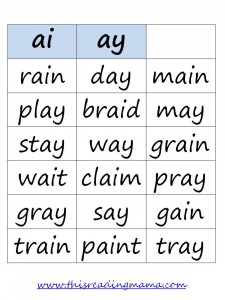
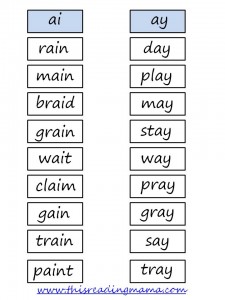




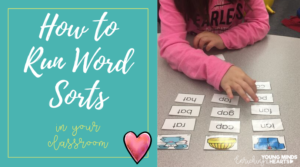










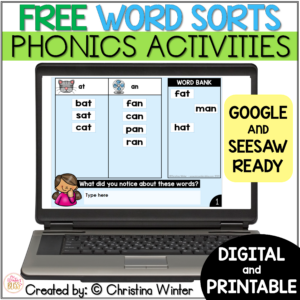
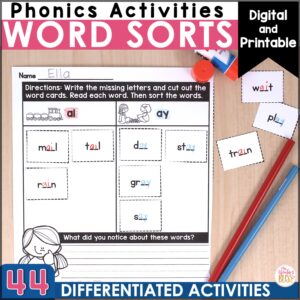
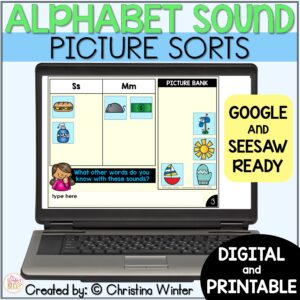


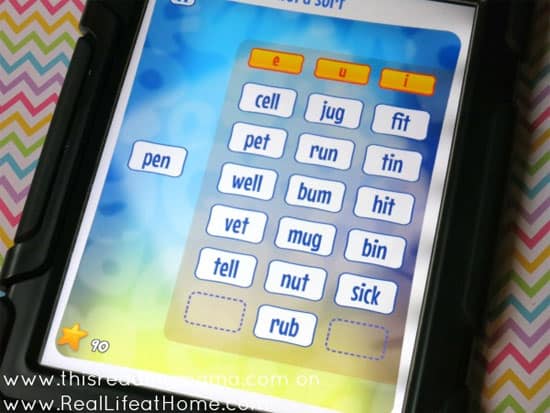
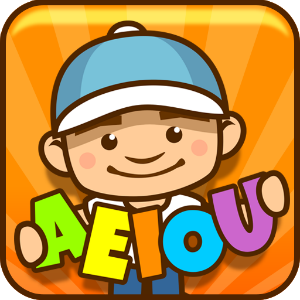

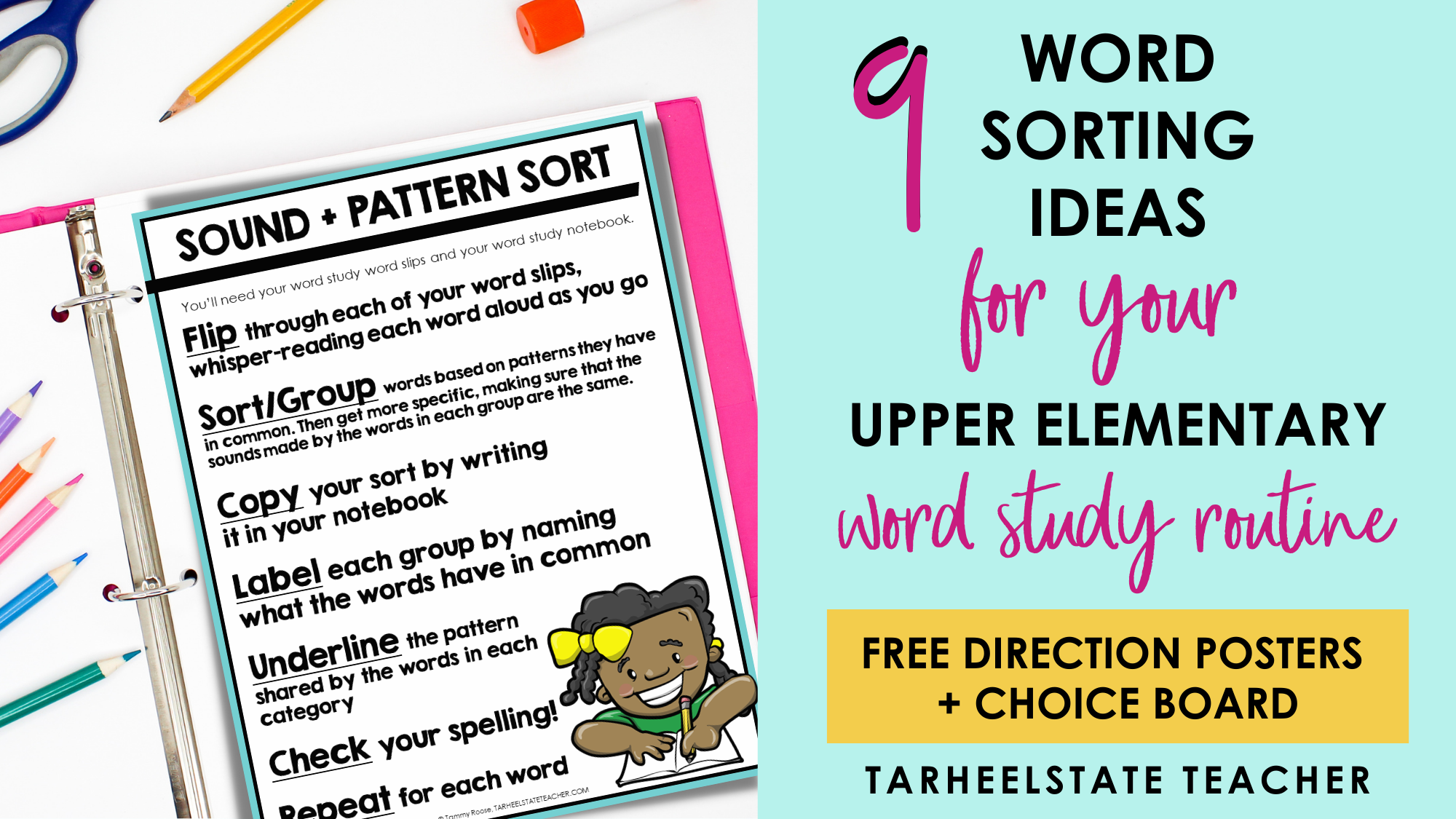
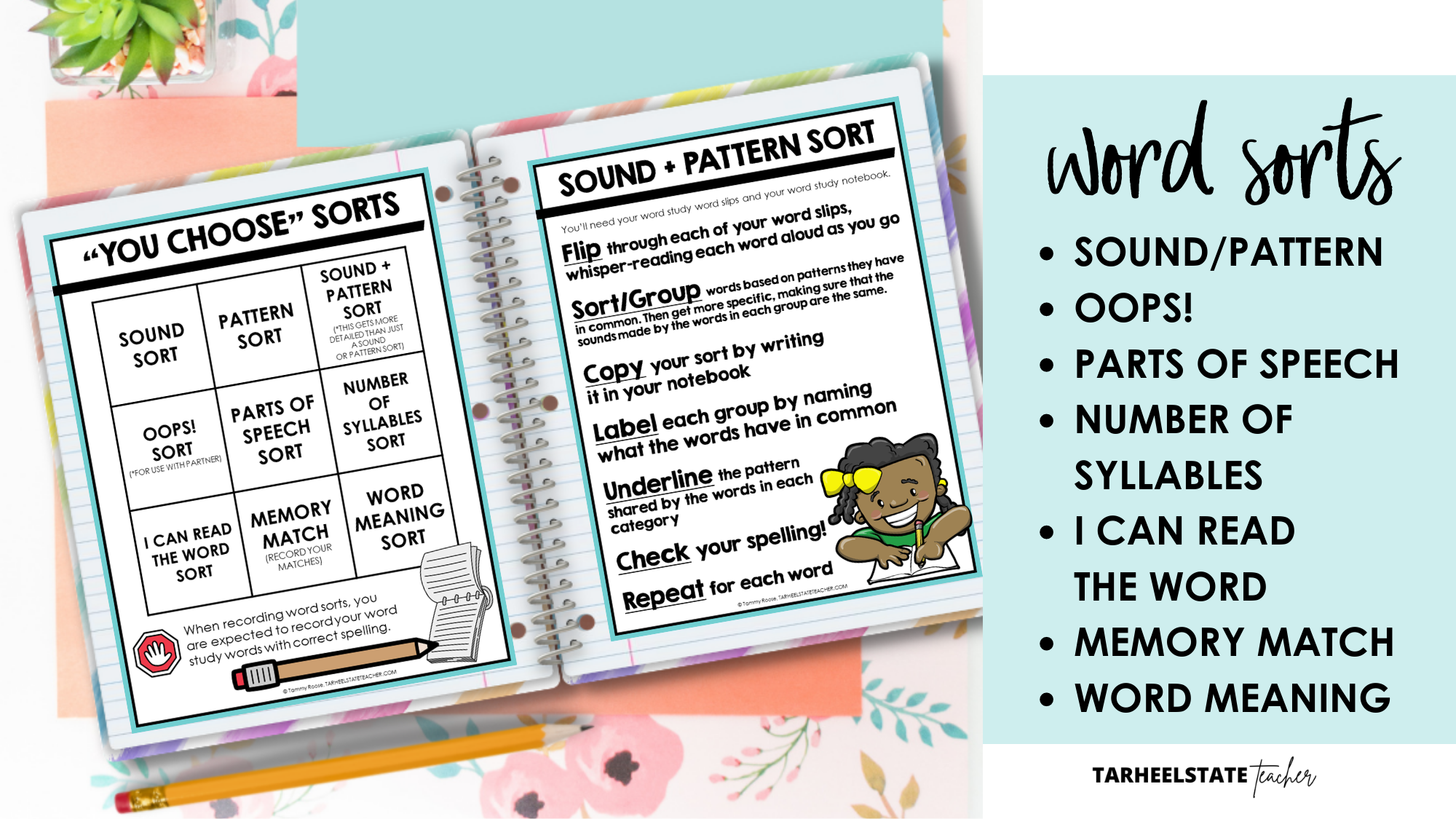
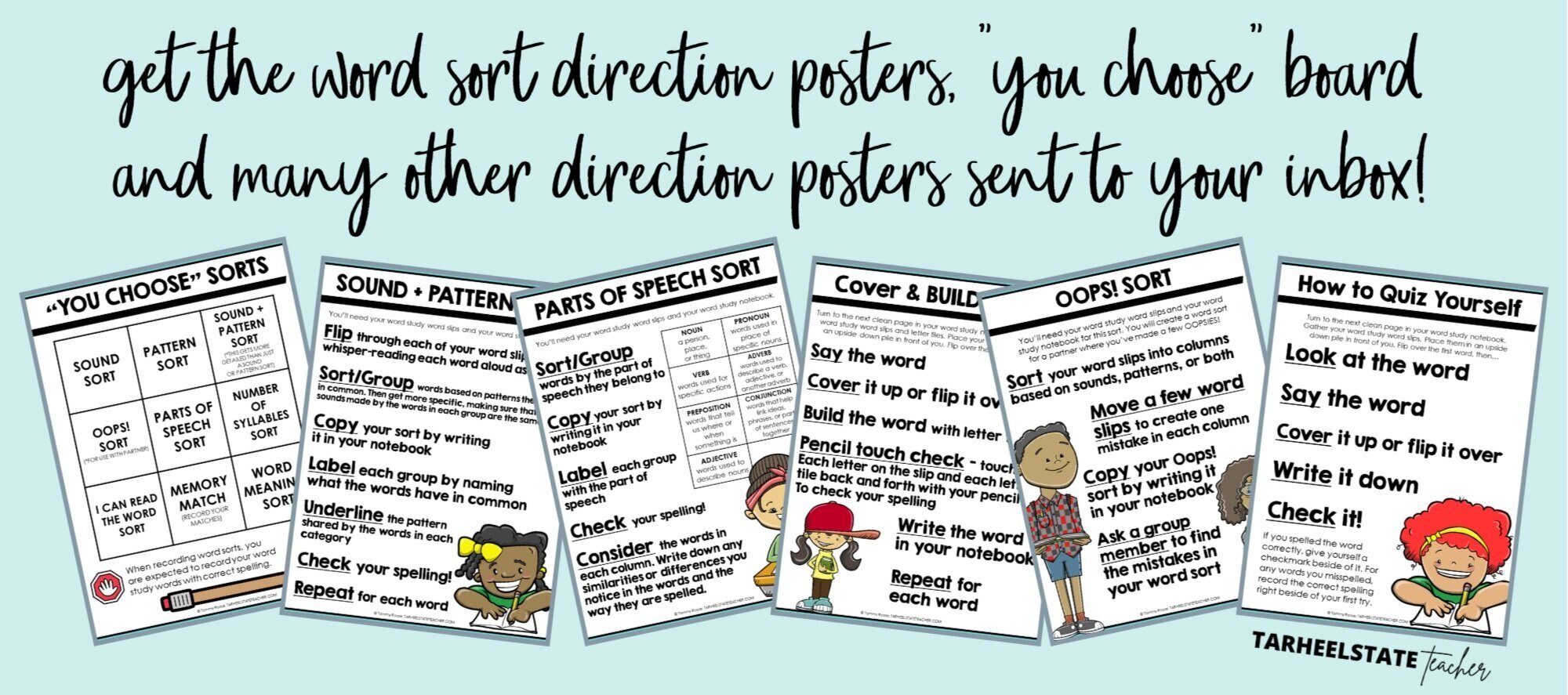
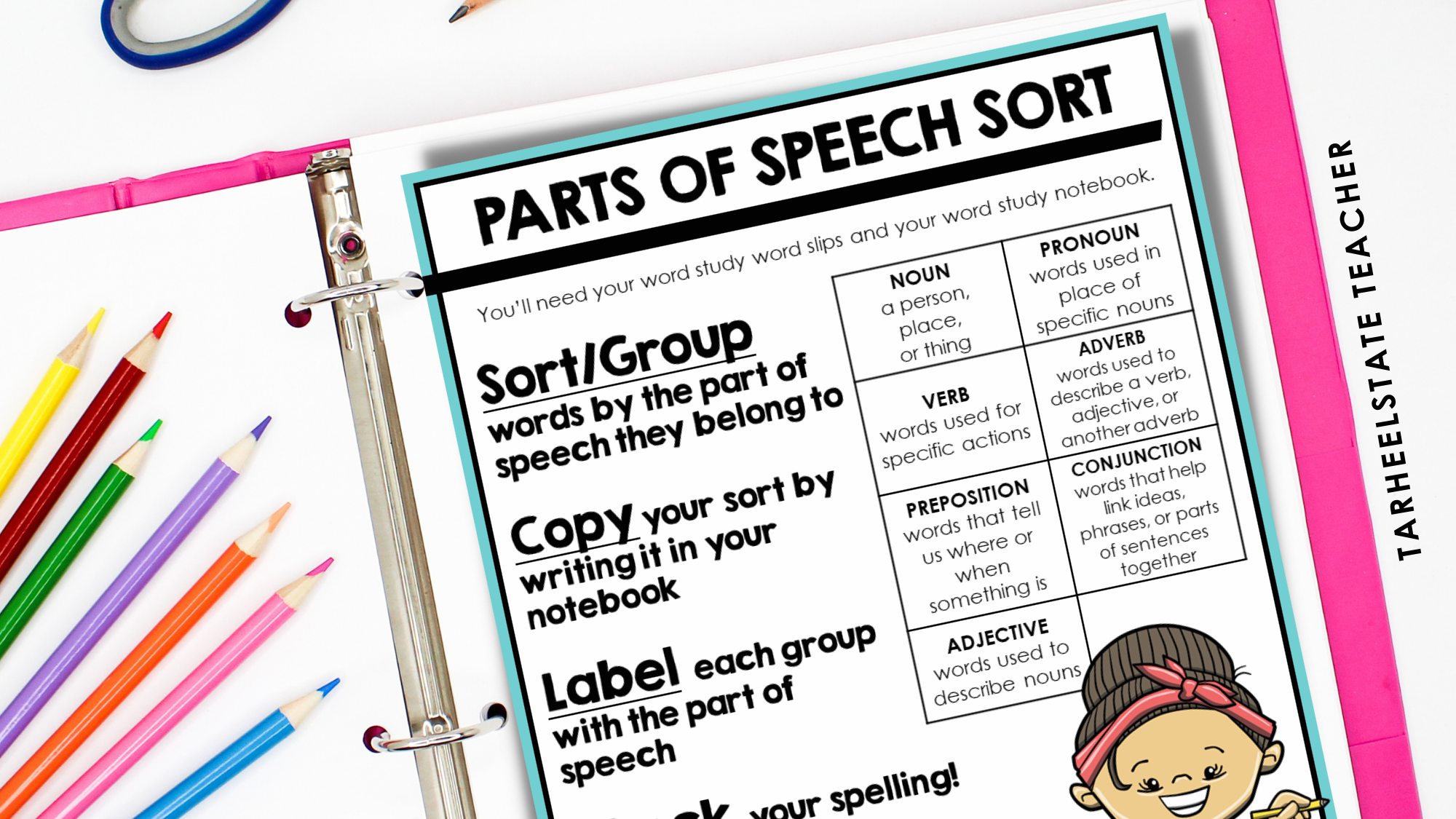
 MEMORY MATCH SORT
MEMORY MATCH SORT
